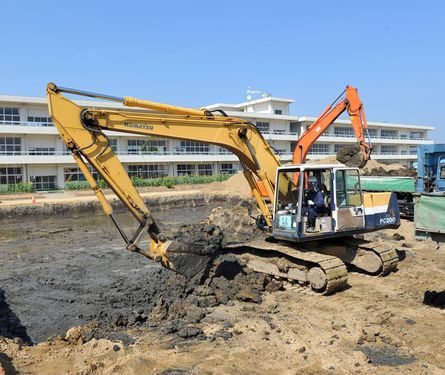
A group led by Isao Tanihata, a professor at Osaka University's Research Center for Nuclear Physics, and Kozi Nakai, a former professor at the Tokyo University of Science, said the best way to get rid of the radioactive soil is to place it in noncorrosive, pressure-tight vessels and dumping them at least 2,000 meters deep near Japan.
"The sea, away from all residents, would pose no problem," Tanihata told about 30 researchers at a study meeting at Osaka University on Dec. 3.
The participants, including nuclear physicists and researchers at the Japan Atomic Energy Agency, did not object to the proposal from a scientific point of view.
But former education minister Akito Arima, who was also present, said, "The sea is common property of all humankind, and the key is whether fishermen and the general public will support the proposal."
Tanihata and Nakai, who have been involved in compiling the science ministry's soil contamination map, drafted the proposal as the government faces difficulties finding a final disposal site for soil contaminated with radioactive materials from the crippled Fukushima No. 1 nuclear power plant.
The group plans to submit a formal proposal to the government.
But it will be difficult to realize the project partly because dumping contaminated soil into the sea could constitute a violation of the London Convention, designed to prevent marine pollution.
When Japan released more than one ton of low-density radioactive water from the plant into the ocean in April, criticism arose from governments overseas.
Tanihata estimates that a highly contaminated area of 150 square kilometers northwest of the Fukushima No. 1 plant has about 750 trillion becquerels in the soil.
Tanihata said marine pollution will not worsen substantially--even if the soil is dumped directly--because its radiation levels are about 5 percent of those already released into the sea in the Fukushima nuclear accident.
He added that contaminated soil would not float even if the vessel breaks and soil spills out.
The government plans to remove radioactive materials in areas with annual radiation levels of 1 millisievert or more.
The removed soil could be stuck in temporary yards in municipalities or a temporary storage facility to be set up in Fukushima Prefecture if a final disposal site is not found.
The contaminated soil is expected to amount to 15 million to 31 million cubic meters in Fukushima Prefecture alone.



Hemp phytoremediation could be a viable alternative to dumping it in the oceans and hoping it doesn't leak.
[Link]